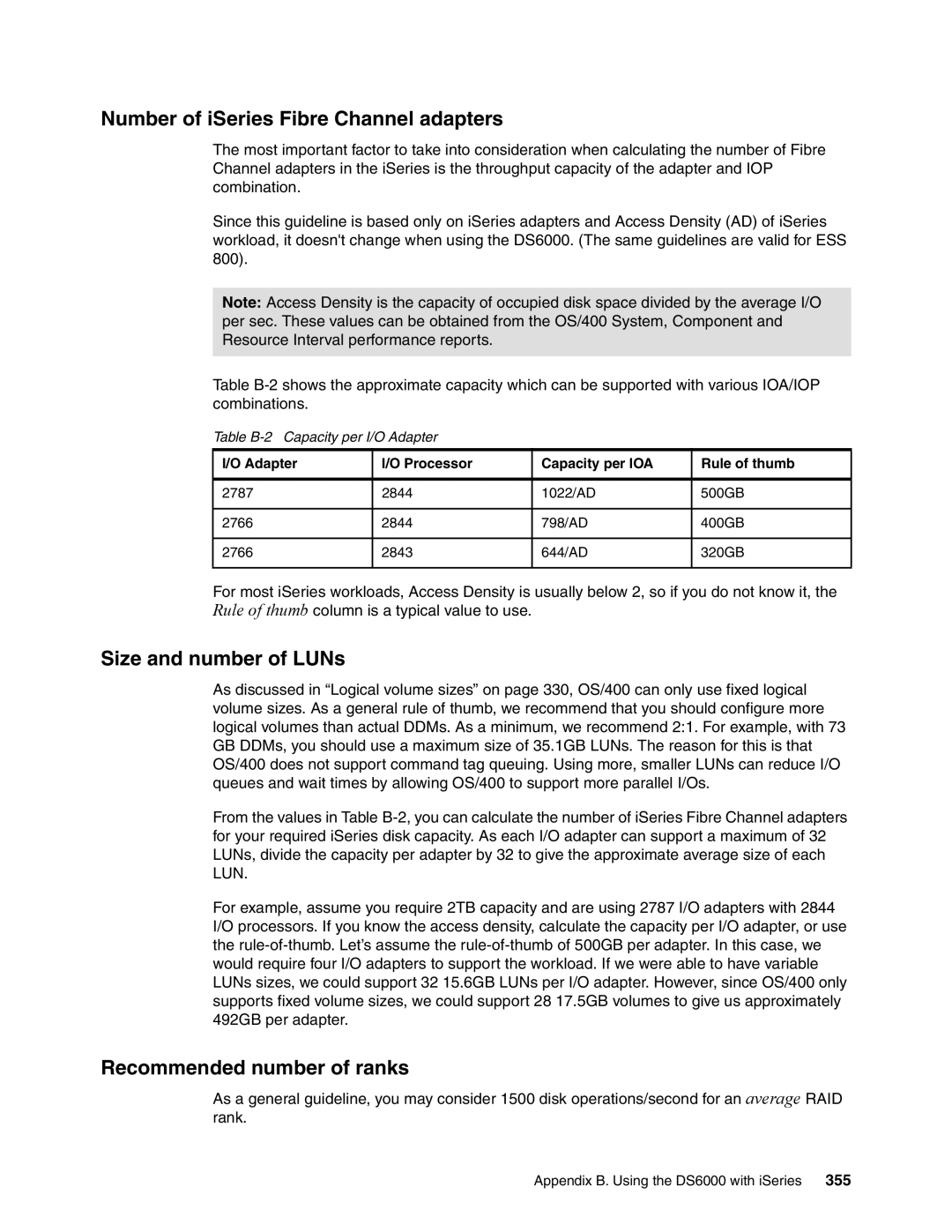
Number of iSeries Fibre Channel adapters
The most important factor to take into consideration when calculating the number of Fibre Channel adapters in the iSeries is the throughput capacity of the adapter and IOP combination.
Since this guideline is based only on iSeries adapters and Access Density (AD) of iSeries workload, it doesn't change when using the DS6000. (The same guidelines are valid for ESS 800).
Note: Access Density is the capacity of occupied disk space divided by the average I/O per sec. These values can be obtained from the OS/400 System, Component and Resource Interval performance reports.
Table
Table B-2 Capacity per I/O Adapter
I/O Adapter | I/O Processor | Capacity per IOA | Rule of thumb |
|
|
|
|
2787 | 2844 | 1022/AD | 500GB |
|
|
|
|
2766 | 2844 | 798/AD | 400GB |
|
|
|
|
2766 | 2843 | 644/AD | 320GB |
|
|
|
|
For most iSeries workloads, Access Density is usually below 2, so if you do not know it, the Rule of thumb column is a typical value to use.
Size and number of LUNs
As discussed in “Logical volume sizes” on page 330, OS/400 can only use fixed logical volume sizes. As a general rule of thumb, we recommend that you should configure more logical volumes than actual DDMs. As a minimum, we recommend 2:1. For example, with 73 GB DDMs, you should use a maximum size of 35.1GB LUNs. The reason for this is that OS/400 does not support command tag queuing. Using more, smaller LUNs can reduce I/O queues and wait times by allowing OS/400 to support more parallel I/Os.
From the values in Table
For example, assume you require 2TB capacity and are using 2787 I/O adapters with 2844 I/O processors. If you know the access density, calculate the capacity per I/O adapter, or use the
Recommended number of ranks
As a general guideline, you may consider 1500 disk operations/second for an average RAID rank.
Appendix B. Using the DS6000 with iSeries 355
